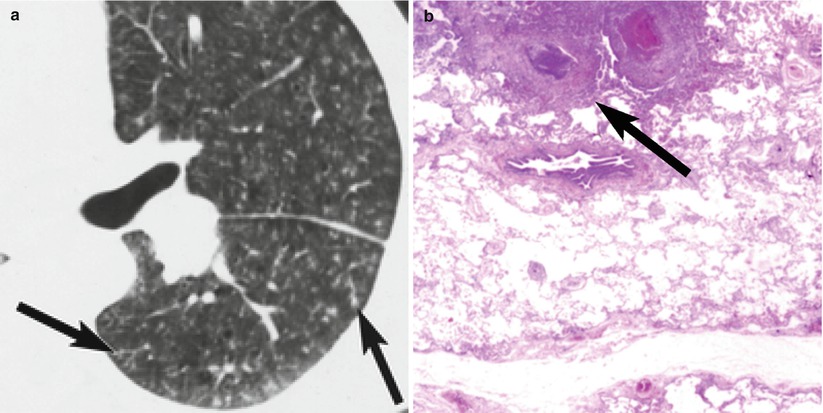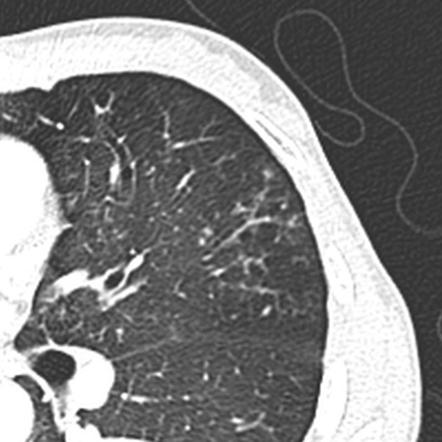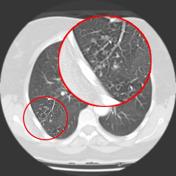tree in bud opacities in lungs
A larger lung nodule such as one thats 30 millimeters or larger is more likely to be cancerous than is a. 11 TIB opacities represent a central imag- Background.

Tree In Bud Sign And Bronchiectasis Radiology Case Radiopaedia Org
Although initially described in 1993 as a thin-section chest CT finding in active tuberculosis TIB opacities are by.
. 1 5 6 7 8 9 10 11 12. Tree-in-bud sign lung Tree-in-bud sign or pattern describes the CT. High-resolution CT usually reveals small 24-mm centrilobular nodules and branching linear opacities of similar caliber originating from a single stalk Figs 2 3 4.
Computerized detection of tree-in-bud pattern. The tree-in-bud sign is a nonspecific imaging finding that implies impaction within bronchioles the smallest airway passages in the lung. A young male patient who had a history of fever cough and respiratory distress presented in the emergency department.
Tib opacities are also associated with bronchiectasis and small airways obliteration resulting in mosaic air trapping. Bronchiectasis which may be of any cause can produce the tree-in-bud pattern. Richards JC Lynch DA Chung JH.
These small clustered branching and nodular opacities represent terminal airway mucous impaction with adjacent peribronchiolar inflammation. However to our knowledge the relative frequencies of the causes have not been evaluated. The tree-in-bud pattern suggests active and contagious disease especially when associated with adjacent cavitary disease within the lungs.
Multiple causes for tree-in-bud TIB opacities have been reported. In radiology the tree-in-bud sign is a finding on a CT scan that indicates some degree of airway obstruction. These small clustered branching and nodular opacities represent terminal airway mucous impaction with adjacent peribronchiolar inflammation.
Distal pulmonary vasculature More specifically the pattern can be manifest because of the following disease processes often in combination. The tree-in-bud pattern occurs commonly in pa-tients with endobronchial spread of Mycobacte-rium tuberculosis and is highly suggestive of active tuberculosis 23. Tree-in-bud TIB opacities are a common imaging finding on thoracic CT scan.
Cystic and nodular lung disease. As in this case renal cell carcinoma is one of the most common malignancies that may produce this vascular cause of tree-in-bud pattern. We investigated the pathological basis of the tree-in-bud lesion by reviewing the pathological specimens of bronchograms of normal lungs and contract radiographs of the post-mortem lungs manifesting active.
The study popu- lation was an unselected. Distal airways more common 2. The purpose of this study was to determine the relative frequency of causes of TIB opacities and identify patterns of disease associated with TIB opacities.
Tree in Bud Sign Bronchopulmonary Aspergillosis ABPA CT scan through the chest shows medium sized bronchi bronchioles and small airways impacted with fluid. It consists of small centrilobular nodules of soft-tissue attenuation connected to multiple branching linear structures of similar caliber that originate from a. Tree In Bud Sign Lung Radiology Reference Article Radiopaedia Org Note the scattered lung nodules surrounded by.
In this regard what are tree in bud nodules. Tree-in-bud refers to a pattern seen on thin-section chest CT in which centrilobular bronchial dilatation and filling by mucus pus or fluid resembles a budding tree. TIB opacities are also associated with bronchiectasis and small airways obliteration resulting in mosaic air trapping.
The tree-in-bud-pattern of images on thin-section lung CT is defined by centrilobular branching structures that resemble a budding tree. Multiple causes for tree-in-bud TIB opacities have been reported. The purpose of this study was to determine the relative frequency of causes of tib opacities and identify patterns of disease associated with tib opacities.
What does tree-in-bud opacities mean. We here describe an unusual cause of TIB during the COVID-19 pandemic. Lung nodules are usually about 02 inch 5 millimeters to 12 inches 30 millimeters in size.
This collage is presented to reveal tree in bud changes resulting from impaction in the smaller terminal bronchioles and respiratory units. There are many technical obstacles to detecting complex shape patterns such as tree-in-bud that are associated with pulmonary infections. The most common CT findings are centrilobular nodules and branching linear and nodular opacities.
The tree-in-bud pattern is commonly seen at thin-section computed tomography CT of the lungs. The tree-in-bud sign is a nonspecific imaging finding that implies impaction within bronchioles the smallest airway passages in the lung. The tree-in-bud sign is a nonspecific imaging finding that implies impaction within bronchioles the smallest airway passages in the lung.
Not only are these patterns difficult to detect but micro-nodules and other normal and abnormal structures have strong shape and appearance similarities with existing structures in the lungs. Usually somewhat nodular in appearance the tree-in-bud pattern is generally most pronounced in the lung periphery and associated with abnormalities of the larger airways. Causes and imaging patterns of tree-in-bud opacities.
AJR Am J Roentgenol 1998171365370. Another important entity that can produce the tree-in-bud pattern is bronchioalveolar carcinoma BAC 1. Tree-in-bud TIB appearance in computed tomography CT chest is most commonly a manifestation of infection.
Clin Chest Med 201536299312 ix. Tib opacities are also associated with bronchiectasis and small airways obliteration resulting in mosaic air trapping. 1 direct filling of the centrilobular arteries by tumor emboli and 2 fibrocellular intimal hyperplasia due to carcinomatous endarteritis.
TIB opacities represent a normally invisible branches of the bronchiole tree 1 mm in diameter that are severely impacted with mucous pus or fluid with resultant dilatation and budding of the terminal bronchioles 2 mm in diameter1 photo. Bronchiolesfilled with pus or inflammator. Rossi SE Franquet T Volpacchio M Gimenez A Aguilar G.
Simply put the tree-in-bud pattern can be seen with two main sites of disease 3. Miller WT Jr Panosian JS. 3 found that the tree-in-bud pattern was seen in 256 of the CT scans in patients with bronchiectasis.
In radiology the tree-in-bud sign is a finding on a CT scan that indicates some degree of airway obstruction. This is the classic appearance of the tree in bud pattern seen on chest ct. Tree-in-bud TIB opacities are a common imaging finding on thoracic CT scan.
A tree-in-bud pattern of centrilobular nodules from metastatic disease occurs by two mechanisms. Multiple causes for tree-in-bud TIB opacities have been reported. Is a 7mm lung nodule big.
In radiology ground glass opacity GGO is a nonspecific finding on computed tomography CT scans that indicates a partial filling of air spaces in the lungs by exudate or transudate as well as interstitial thickening or partial collapse of lung alveoli. However to our knowledge the relative frequencies of the causes have not been evaluated. 1 2 3 4 Reported causes include infections aspiration and a variety of inflammatory conditions.

Tree In Bud Sign Radiology Key

High Resolution Chest Ct Scan Axial Slice Shows Tree In Bud Pattern Of Download Scientific Diagram

Tree In Bud Sign Lung Radiology Reference Article Radiopaedia Org

Tree In Bud Sign Lung Radiology Reference Article Radiopaedia Org
View Of Tree In Bud The Southwest Respiratory And Critical Care Chronicles

A Chest X Ray With A Miliary Pattern And A Tree In Bud Sign Download Scientific Diagram

Tree In Bud Sign Lung Radiology Reference Article Radiopaedia Org

Ct Scan Of Chest Revealing Scattered Tree In Bud Opacities In Both Download Scientific Diagram

References In Causes And Imaging Patterns Of Tree In Bud Opacities Chest

Pdf Causes And Imaging Patterns Of Tree In Bud Opacities Semantic Scholar
View Of Tree In Bud The Southwest Respiratory And Critical Care Chronicles


